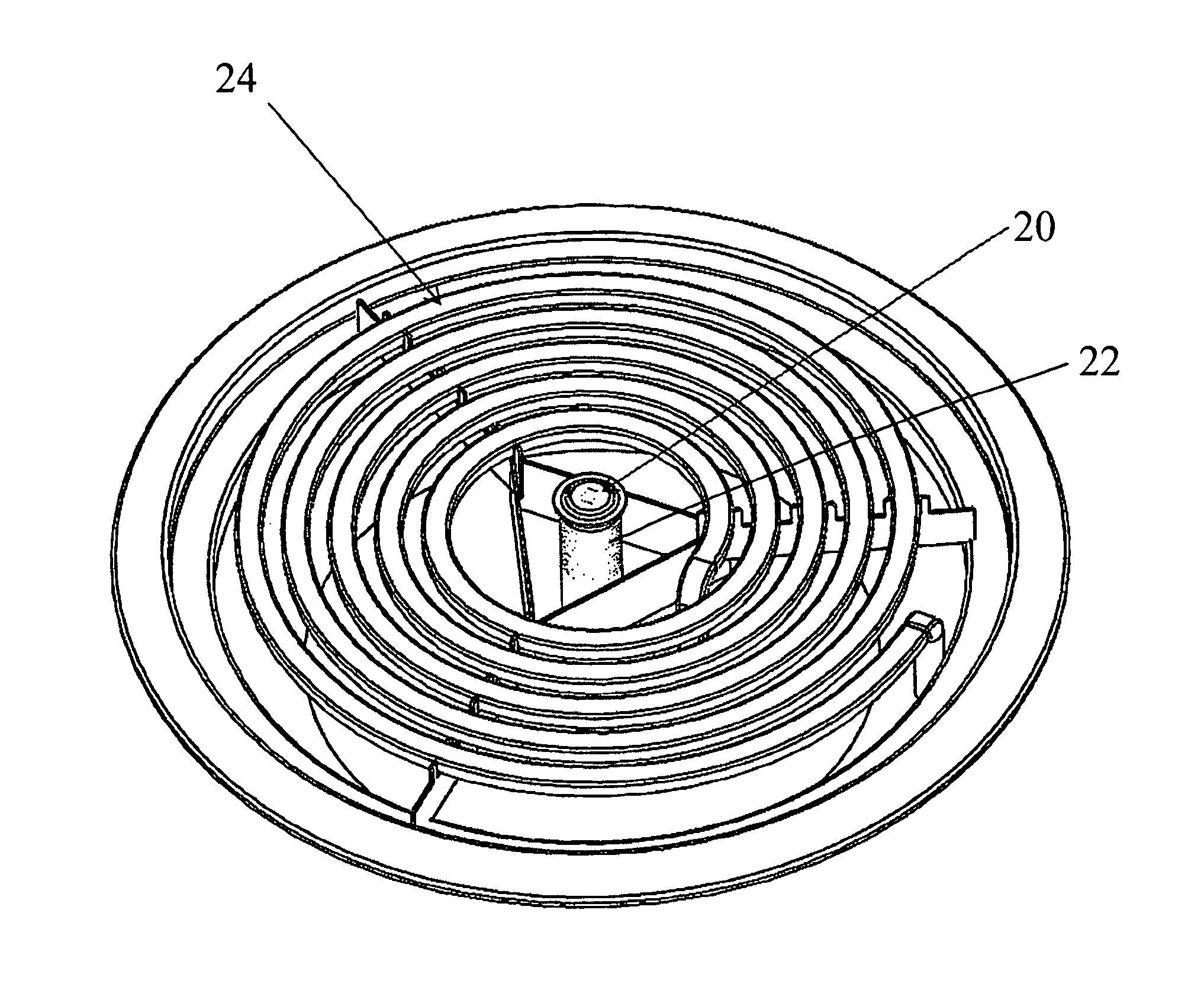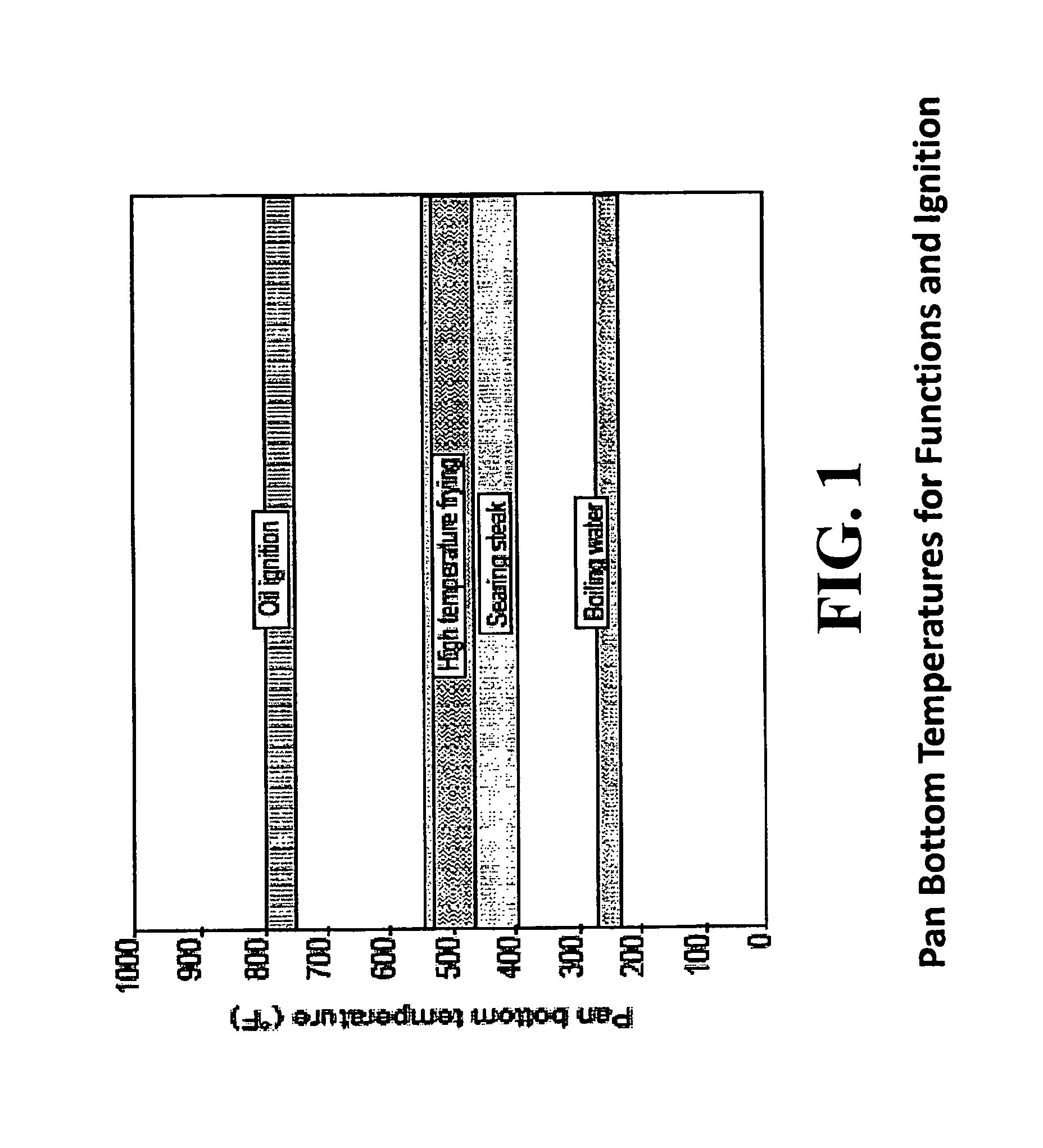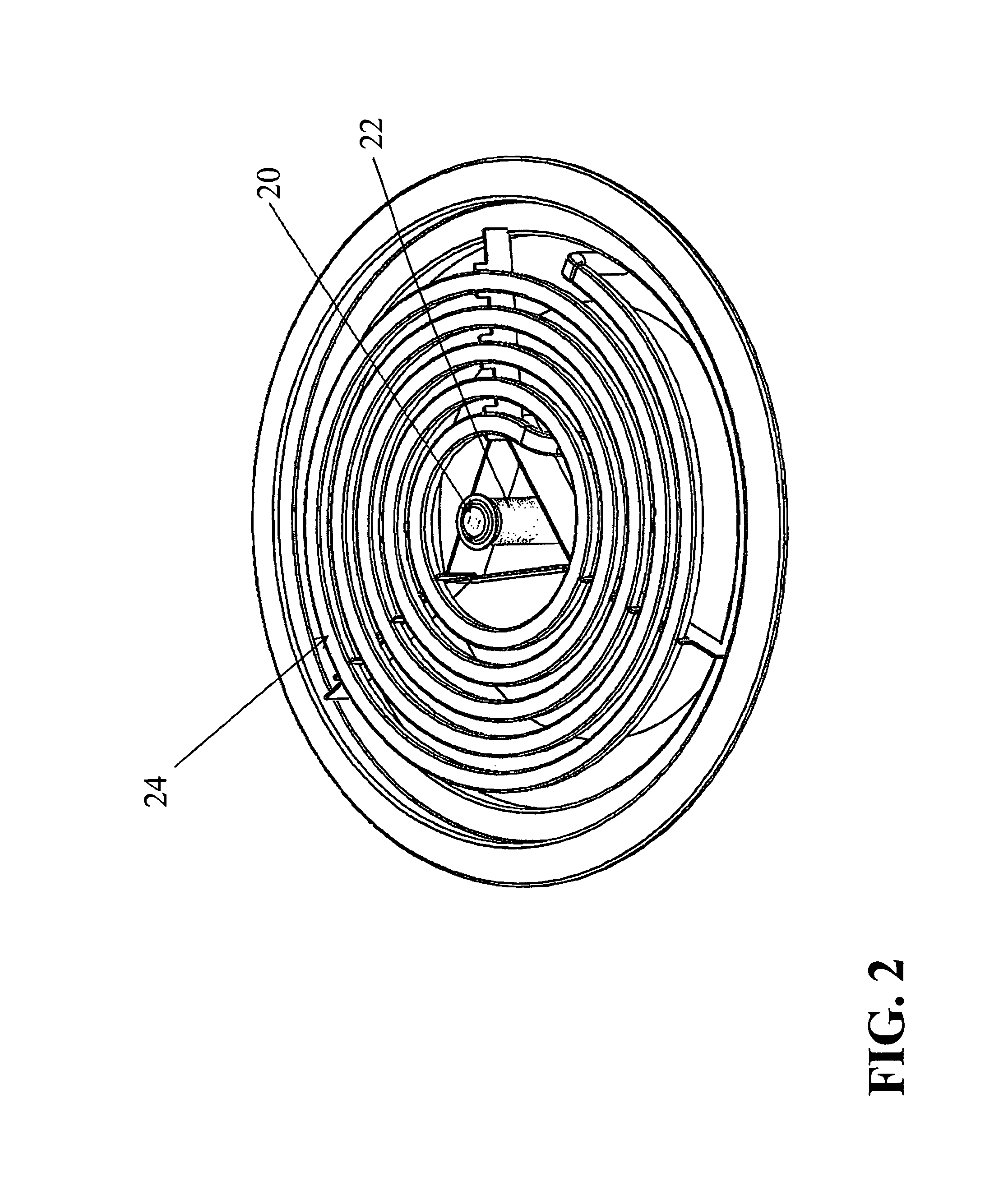Device and method for cooktop fire mitigation
a technology for fire mitigation and cooktops, applied in the field of devices and methods for cooking stoves, can solve the problems of insufficient fire risk indicator, insufficient time to catch high pan temperatures, and significant source of property damage and injury in residential cooking fires, and achieve the effect of reducing the risk of cooking fires
- Summary
- Abstract
- Description
- Claims
- Application Information
AI Technical Summary
Benefits of technology
Problems solved by technology
Method used
Image
Examples
Embodiment Construction
[0040]The present invention provides a temperature-dependent cooktop safety device and method for various cooktops, such as including a gas burner or electric element for heating food material in a cookware container, referred to generally herein as a “pan.”FIG. 1 illustrates approximate pan bottom temperatures of various cooking functions, along with an approximate temperature threshold above which oil in the pan could ignite. The invention includes a temperature detection means for detecting or inferring the temperature of the bottom face of the pan and automatically reducing the pan temperature to avoid the ignition situation. The invention includes a control device, or controller for short, that monitors a temperature sensor, and includes a heat control circuit for controlling the amount of heat issued from the electric heating element or gas burner, based upon an algorithm that defines the on / off state based upon characteristics of the detected temperature.
[0041]FIG. 2 shows a ...
PUM
 Login to View More
Login to View More Abstract
Description
Claims
Application Information
 Login to View More
Login to View More - R&D
- Intellectual Property
- Life Sciences
- Materials
- Tech Scout
- Unparalleled Data Quality
- Higher Quality Content
- 60% Fewer Hallucinations
Browse by: Latest US Patents, China's latest patents, Technical Efficacy Thesaurus, Application Domain, Technology Topic, Popular Technical Reports.
© 2025 PatSnap. All rights reserved.Legal|Privacy policy|Modern Slavery Act Transparency Statement|Sitemap|About US| Contact US: help@patsnap.com



